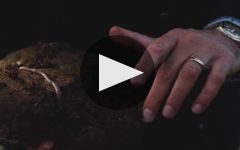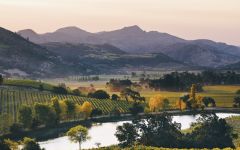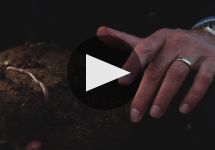Quintessa (375ML half-bottle) 2018
-
James
Suckling -
Wine
Enthusiast -
Robert
Parker -
Wine
Spectator



Product Details
Your Rating
Somm Note
Winemaker Notes
The 2018 Quintessa is a wine of perfect harmony, with deep flavors and elegant layers that are apparent even from a young age. Intense aromas of cassis, black cherry, and raspberry intermingle with savory notes of sage and thyme; the 2018 Quintessa continues to unfold as notes of dark chocolate, graphite and fresh tobacco mingle with the fresh fruit. Precise and dense, the wine shows supple tannin that play with flavors of black cherry, dark chocolate, and crushed rocks. The 2018 Quintessa has a perfect balance of fresh acidity followed by bright fruit and minerality at the finish that portends unparalleled aging potential.
Blend: 92% Cabernet Sauvignon, 2% Merlot, 3% Cabernet Franc, 2% Carmenére, 1% Petit Verdot
Professional Ratings
-
James Suckling
This is beautifully polished with firm, dusty tannins to the blue fruit, as well as chocolate and cedar character. Some much earthier character, too, from mushrooms to bark. Forest flowers. Perfumed. It’s full-bodied with round tannins and a soft, creamy finish. Some iron and iodine to this. So attractive at the finish. From biodynamically grown grapes.
-
Wine Enthusiast
This is an exceptional vintage of this exceptional wine, its foundation built around 92% Cabernet Sauvignon, with dustings of Merlot and Cabernet Franc. Beautiful in berry fruit, textured and refined tannin and hints of lavender, licorice and sage, it has complexity and energy in equal measure, lengthy and beautifully focused, a truly impressive achievement of site, vintage and winemaker.
-
Robert Parker's Wine Advocate
The dense, purple-hued 2018 Proprietary Red Wine seemed just a bit closed at this tasting, with pronounced cedary notes overshadowing the black cherry fruit. It's medium to full-bodied, with a lush mouthfeel, silky-textured tannins and cocoa powder-like nuances on the lingering finish.Best After 2023. Rating: 94+
-
Wine Spectator
Very fresh in feel, with a racy and refined core of cassis, damson plum and raspberry reduction notes inlaid with black tea and anise hints. A subtle mineral edge adds length to the finish, with the fruit showing nice restraint despite its youth. Cabernet Sauvignon, Merlot, Petit Verdot and Carmenère.
Other Vintages
2020- Decanter
-
James
Suckling
-
Wine
Enthusiast -
James
Suckling -
Jeb
Dunnuck - Decanter
-
Robert
Parker -
Wine
Spectator
-
Robert
Parker -
James
Suckling -
Wilfred
Wong - Decanter
-
Wine
Spectator
-
James
Suckling -
Jeb
Dunnuck - Decanter
-
Robert
Parker -
Wine
Spectator -
Wilfred
Wong
-
James
Suckling -
Robert
Parker -
Wine &
Spirits
-
James
Suckling -
Robert
Parker
-
James
Suckling -
Robert
Parker - Decanter
-
James
Suckling -
Robert
Parker -
Wine
Spectator
-
Wilfred
Wong -
James
Suckling -
Wine
Enthusiast -
Connoisseurs'
Guide
- Decanter
-
Robert
Parker -
Wine &
Spirits -
Wine
Spectator
-
Connoisseurs'
Guide
-
Connoisseurs'
Guide -
Wine
Enthusiast -
Wine
Spectator -
Robert
Parker
-
Wine
Enthusiast -
Wilfred
Wong -
Wine &
Spirits
-
Connoisseurs'
Guide
-
Connoisseurs'
Guide -
Wine
Enthusiast -
Wine &
Spirits -
Wilfred
Wong
-
Wine
Enthusiast
-
Wine
Enthusiast -
Robert
Parker -
Wine &
Spirits
-
Wine
Spectator -
Wine
Enthusiast -
Wine &
Spirits
-
Wine
Enthusiast -
Wine
Spectator
-
Wine
Spectator -
Wine
Enthusiast
-
Wine
Spectator

A noble variety bestowed with both power and concentration, Cabernet Sauvignon enjoys success all over the globe, its best examples showing potential to age beautifully for decades. Cabernet Sauvignon flourishes in Bordeaux's Medoc where it is often blended with Merlot and smaller amounts of some combination of Cabernet Franc, Malbecand Petit Verdot. In the Napa Valley, ‘Cab’ is responsible for some of the world’s most prestigious, age-worthy and sought-after “cult” wines. Somm Secret—DNA profiling in 1997 revealed that Cabernet Sauvignon was born from a spontaneous crossing of Cabernet Franc and Sauvignon Blanc in 17th century southwest France.

The Rutherford sub-region of Napa Valley centers on the town of Rutherford and covers some of Napa Valley’s finest vineyard real estate, spanning from the Mayacamas in the west, to the Vaca Mountains on the other side of the valley.
Inside of the Rutherford AVA, bordering the Mayacamas, is a stretch of uplands called the Rutherford Bench. (These bench lands technically run the length of Oakville as well). Mountain runoff creates deep, well-drained, alluvial soils on the bench, giving vine roots plenty of reason to permeate deep into the ground. The result is wine with great structure and complexity.
Rutherford Cabernet Sauvingons and Bordeaux Blends garner substantial attention for their enticing fragrances of dusty earth and dried herbs, broad and juicy mid-palates and lush and fine-grained tannins. The sub-appellation claims some of the valley’s most prized vineyards today, namely Caymus, Rubicon and Beckstoffer Georges III.
It is also home to Napa’s most influential and historic personalities. Thomas Rutherford, responsible for the appellation's name, made serious investments here in grape growing and wine production between the years of 1850 to 1880. Gustave Niebaum purchased a large swath of land and completed his winery in 1887, calling it “Inglenook.” Today this remains the oldest bonded winery in California. Georges Latour founded Beaulieu Vineyard in 1900, making it the oldest continuous winery in the state. Latour also hired the famous enologist, André Tchelistcheff, a man credited for single-handedly defining the modern Napa winemaking style.










